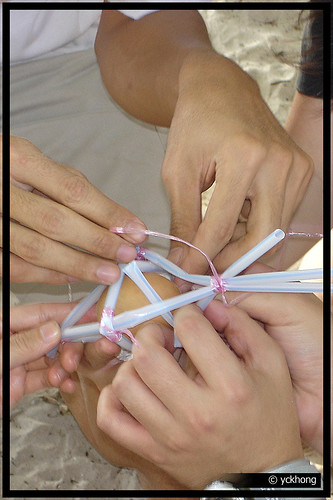Please view my reflection and post any comments you may have. Thank you
Abstract
Social change is necessary to promote innovation and a holistic view of educational technology. Beginning in the 1950s, educational technology developed three main paradigms that would not have been possible if segregation was allowed to continue. Three decades are examined to show how each strand of society has influenced educational technology and created the diverse learning environments of the modern classroom.
Reflection: How Social Change Affects Educational Technology
Changes in education and technology occur more rapidly in the 21st century than in decades past, though most innovations are reflections of previous discoveries. In the years since the 1950s both politics and the view of the individual have shaped educational technology in a multitude of ways. The most crucial decades for developing modern educational practice occurred in the years between 1950 and 1980. Each of these decades will be examined to provide insight as to how each strand in Toffler’s Wave Theory (Toffler, 1980) has affected the development of educational technology.
Crux of Change The 1950s introduced many new ways of viewing the individual and his or her process of learning. Building upon previous theories of visual instruction, and its subsequent decline, psychologists began developing new ways to understand how to develop desired behaviors. Prior to this decade, education was largely a passive activity for the majority of American students, which is evidenced by the popularity of behaviorism and the departure from Dewey’s progressive ideas (Saettler, 2004). Educators and policy makers were not unified in a way that promoted open and constructive dialogue and large portions of the population were still segregated by race or exceptionality. Because of the focus on passive learning and the lack of equality in education, this time could be viewed as an infancy period for instructional technology. However, with the advent of computers technology began to surge forward and usher in the Information Age.
Civil rights were important to creating social change, especially in the South. Promulgated by a new public understanding of the contributions of minority Americans in WWII and legislation that legitimized the role of each member of society, the American public began to come together as a more cohesive whole. Even after Brown v. Board of Education segregation and racism were common in school settings, but due to the collective will and determination of a brave few both education and equality began to improve. Technological developments and the rise of the Soviet Union created both the platform and motivation to further the sciences and the will to move forward as a union.
Moving Forward As American society began to better understand the worth of individuals and the importance of a just society, psychologists and scholars began to look at the human mind in different ways. No longer was the individual a passive participant in learning; in play were important cognitive processes that were beginning to be understood due to the development of computer models (Saettler, 2004). No longer were educators and researchers purely dedicated to behaviorist principles and a new paradigm began to emerge with the aid the introduction of Piaget’s research on cognitive development to the American research community.
The break from behaviorism was based primarily on the introduction of learning models that promoted the idea of memory and decision making based on a multitude of non-environmental factors. Two divergent models of education presented how the delivery of curricula should be approached: Bruner’s model that promoted the teacher as central to the delivery of curricula and the behaviorist model that promoted a “teacher-proof” model of instructional design (Graham, 2005; Saettler, 2004). As a result of this rivalry between the role of the teacher and the value of the curriculum, research on methods of instruction and cognition began to flourish (Saettler, 2004). New models of memory and learning began to take shape and the “complacency” model of public schooling from the previous decades was coming to an end with the passage of a landmark educational reform on the heels of the Civil Rights Act of 1964. The Elementary and Secondary Education Act (ESEA) promoted equitable education by providing federal funding for low-income schools and those that served high numbers of minority students. Arguably one of the most important and significant pieces of federal legislation, ESEA provided the impetus and funding to ensure the desegregation and equal education of all students.
Standing Still, then Surging
The previous two decades created many opportunities for Americans and provided educational equity in many ways due in part to the efforts of the Civil Rights movement. Universities were providing teachers with the best instructional practices and methodology than at any other time in the 20th century and the public was eager to compete in a growing world economy (Graham, 2005; Toffler, 1980). The election of Nixon in 1968 considerably slowed the efforts of the previous decade and several decisions by the Supreme Court slowed the advancement of equal education (Graham, 2005).
During the 1970s, the public became aware of previous failures to integrate schools and provide equal accessibility to students with special needs. Previous models of learning and instruction were directed towards the “normal” cognitive development of students and as such did not explicitly prescribe interventions to enable a special needs student the chance to succeed. After Nixon left office legislation that promoted an awareness of the unique needs of students was enacted and by 1978 all schools were required to provide free and fair education to all students, regardless of disability (Graham, 2005).
Two seminal books were published emerged that created a paradigm shift for education. Vygotsky and Bruner promoted a view of the individual as a part of a larger learning environment where the roles and interactions of others shape learning and behavior (Pajares, 2004; Vygotsky, 1978). The departure from Skinner and Piaget’s views of the individual further promoted and fueled research to further differentiate learning for all students. As technology promoted a view of the world that far exceeded that of previous years, Americans became cognizant of the need to be leaders in the world not only as a military and economic superpower, but also as the center of innovation for the world. At the end of the 1970s America had three major learning paradigms in place at nearly fully desegregated schools with two major educational initiatives in place; however, schools were not yet established and the next decade would consist of both scathing reports of the educational system and a rush for accountability.
Conclusion Educational technology is not the sum of previous advances; rather, it is a product of innovation and reflection. The speed at which educational technology can be developed and implemented is dependent upon the willingness of the policymakers and the view of the individual learner. Prior to the 1960s learners were seen as passive receptacles of knowledge, then as universities became more connected and initiatives such as the Education Resources Information Center, ideas about cognition and normal stages of development began to influence instruction; as too did cooperative learning and constructivism.
Without the need for innovation and the support of the academic community social change will not occur. The Cold War and race to put an American on the moon brought about innovations that would not have been possible without technological advances and the combined efforts of a united system. Though some momentum was lost in the late 1960s, the continued development of educational technology has influenced modern instructional design and the establishment of fair and appropriate education would not have been possible without equal protection under the law.
References
Graham, P.A. (2005).
Schooling America: How the public schools met the nation’s changing needs. New York: Oxford University Press, Inc.
Pajares, F. (2004). Albert Bandura: Biographical sketch. Retrieved February 18, 2010, from http://des.emory.edu/mfp/bandurabio.html
Saettler, P. (2004).
The evolution of American educational technology. Greenwich, CT: Information Age Publishing.
Toffler, A. (1980). The third wave. New York: Bantam Books
Vygotsky, L. S. (1978).
Mind in society: The development of higher psychological processes. (M. Cole, et al., Eds.). Cambridge, MA: Harvard University Press.







